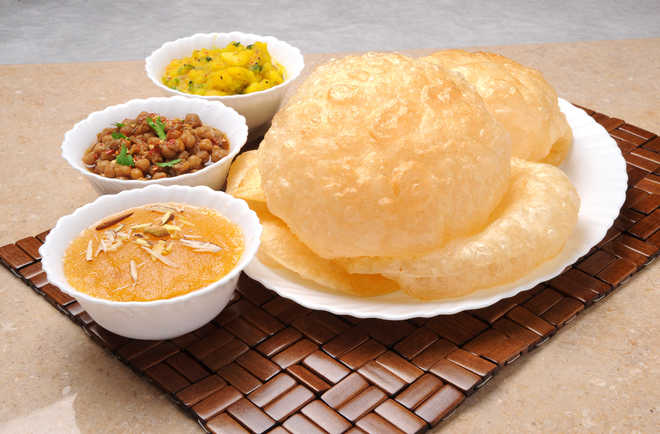
Manveen Kaur
A healthy Punjabi diet can sound like an oxymoron to many. We all know what a Punjabi diet consists of — butter-dripping aaloo paranthas, chhole-bhature, tall glasses of lassi, not to forget dal makhni and butter chicken. While they may not eat these foods at one go, these certainly are calorie-filled foods that can take a toll on anyone’s health in the long run. The regular consumption of this kind of calorie-laden food may be one of the reasons why Punjabis find it difficult to stay in shape. It may be okay to eat the above-mentioned foods once in a while but not on a daily basis.
Like most of us, Punjabis, too, have a sedentary lifestyle and one cannot digest all that ghee as our ancestors did. They used to do a lot of manual work. Hence they were able to burn these calories effectively.
According to a recent survey, Punjabis are neither eating, nor living healthy. One-third of its population is leading a sedentary life and two-third is obese or overweight. Forty-one per cent is suffering from hypertension and 87 per cent is taking salt more than the RDA.
As per another report by the National Health Survey in May 2017, Punjabis are the most obese community. The women (32.4%) in Punjab have left behind the men (32.1%). The youth maybe conscious about fitness but these obesity numbers are a matter of serious concern.
Rustic food, robust race
Their basic and rustic food seems to be an extension of their personalities. The daily meals are usually a combination of paranthas, daal, chhole, dahi, butter chicken and seasonal vegetables tempered in desi ghee, followed by a sumptuous dessert like gajar ka halwa, kheer, phirni, rabri or gajjak, depending upon the season.
Milk and milk products are also an integral part of the Punjabi diet. Dahi, lassi, paneer, cream, ghee and butter are inseparable parts of the Punjabi cuisine, which cater to their culture’s inherent need for energy-dense foods.
Nutritionally speaking, constituents of a traditional Punjabi diet are quite sound. It’s just the output in number of calories that has decreased owing to a sedentary lifestyle. The urban menu, too, has not done much good to these food lovers. It’s time to turn back to the traditional diet so as to tackle health hazards affecting them due to their lifestyle. A reduction in fat, sugar and other refined carbohydrates and starches, along with increased physical activity, is essential. Minimum amount of ghee should be used and lean cooking methods need to be adopted. Smart eating out strategies to keep calories under control and regulation of alcohol intake would go a long way to restore balance in the skewed urbanised Punjabi diets and in checking their increasing waistlines.
The bottomline is that when we don’t do as much work, our body also doesn’t require as much food. If we eat in excess, an increased weight may take a toll on us, thereby making us obese.
When you savour the lip smacking Punjabi delicacies, keep in mind the above mentioned tips in mind and party hard but healthy.
—The writer is a nutritionist with Fitso
Guide to good diet
Include salads in meals: Having a big plate of salad helps when you have your meals. It will make you less likely to overeat and would provide fibre to the body which will help in the digestion process.
Avoid fried mid-day snacks: Many Punjabis tend to snack on samosas, matthis, kachoris, tikkis or pakoras in between meals. Opt instead for green tea with assorted nuts, roasted chanas, fruits, sprouts etc. Not only would you feel energised but you would also feel positive about your diet plan. This would also increase your minerals and vitamins intake.
Drink lots of water: Whenever you feel thirsty, drink water. Drink at least one to two litres water daily. Not only does it reduce your tendency to eat more, water is also essential for hydration and improving the metabolism of your body. You can also have fat-free buttermilk, lemonade and coconut water in summers.
Keep a check on social drinking: Majority of Punjabi social gatherings are incomplete without drinking. But remember, consuming too much alcohol affects the liver adversely and will make you fat. Alcohol consumption leads to accumulation of calories in the body which cannot be utilised quickly. So, limit drinking to once a week.
Eat only when hunger strikes: Eat only when you are hungry or at meal times. Don’t snack in between meals.
Exercise regularly: Punjabis have a tough and strong image, then why not maintain it. Exercising can be beneficial, especially as they consume fatty foods and sugar and a workout can burn excess calories.



























